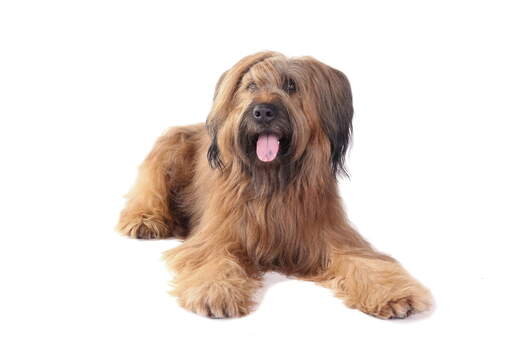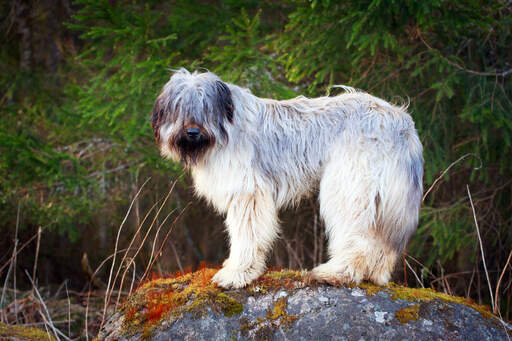Briard Dogs










History
The Briard is a large breed which originates from France. It is mainly used in sheep herding, but during the Second World War it was used as a messenger, sentry and to help locate wounded soldiers. Today, it is still used a sheepdog, by search and rescue organisations and as a Police dog.
Behaviour
The Briard is a happy, joyous dog that loves to please those around it. They love to be involved in family life and dote on children; they can be defensive of them, even when parents discipline them. They are sensitive to noise and will hear things long before you do, they make excellent watch dogs and will bark to announce someone is near by. They can be aloof with strangers but are generally accepting of them once inside the house. Even with their herding instincts, they can live with other dogs.cats if introduced from an early age.
The Briard needs fair training, but is intelligent and has a need to please it's owner. This does make training much easier and they love a cuddle and rough and tumble play when they have done something well. They adapt well to different situations, but do need close companionship and a leader who will teach them right from wrong. Any weakness in training will be spotted and they can advantage of that. They have been bred for centuries to think independently and that can lead then to be stubborn, but using food rewards and positive reinforcement usually works. Training needs to be constant in order for the Briard to know you are in charge and make them respond well. They need affection and do not cope well with harsh words or treatment, but will return your kindness with loyalty and positivity.
A long walk off lead is usually ok with Briards, they respond well to recall when trained and are usually friendly with other dogs when out for a walk. Socialising them early on with puppy classes and later adult classes helps to reinforce the notion that other dogs are no threat and will result in a happy content dog who loves to be around you and your family. If they receive enough exercise, they are chilled out in the home and happy to sleep at your feet (or try and get on your lap). They do well in competitions such as agilty and obedience. Many are used for work with disability groups as the dogs work well as therapy.
Their coat needs a fair amount of brushing, at least every other day to prevent tangles. It is said to be a 'hypo-allergenic' breed, but it still loses dead fur and needs some attention and trimming every so often. Bathing very 8 weeks or so is also recommended.
Eye problems seem to be the main cause for concern with the breed. Progressive Retinal Atrophy and Night blindness are more common than with other breeds, although testing is available.
Temperament
Briards have an independent and watchful temperament. Bred to look sheep, their protective instincts are easily transferred to a family setting where they will be devoted. This means they are not fond of strangers and are territorial with strange animals (although they get on fine with other household animals). Briards need plenty of daily exercise and regular training in order to show them who is boss and prevent them being bored in the home.
Health Problems
Health problems that may affect Briards include canine hip dysplasia (CHD), cancer, bloat, eye disease (uncommon), allergies, hypothyroidism, epilepsy, ear infections, blood clotting disease and hernias.
Breed Details
- Status: Common
- Life Expectancy: 10 - 12 years
- Weight: 25 - 40 kg
- Height: 23 - 27"
- Rare: No
- Coat: Long
- Grooming Requirements: Everyday
- Town or Country: Either
- Minimum Home Size: Large House
- Minimum Garden Size: Large Garden
- Breed Type: Herding
- Size: Large
- Energy Level: Medium
- Exercise Required: Over 2 hours














